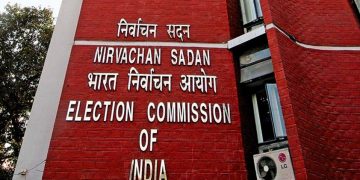SHABIHA NUR KHATOON
Fascination for junk foods, lack of exercise and physical exertion and genetic links explain the spike in number of children and adolescents with Type 1 diabetes. Radical
lifestyle changes, say doctors, are the only solution
Not only are millions of adults worldwide falling prey to the dreaded disease, diabetes, but even teenagers and young people. Juvenile diabetes, which is Type 1 diabetes, is rising at an alarming rate the world over. Although this has resulted from several lifestyle-related factors, doctors say that parents of children with diabetes focus too much on diet and lifestyle at the expense of other serious considerations. Parents, doctors say, should keep a regular check on their child’s health to prevent the occurrence of the disease in the first place. With more than one million juvenile diabetics in India, awareness about this pressing health issue is vital today.
Dr Ajay Gambhir of the department of paediatrics at Centre Point Clinic in New Delhi has encountered many Type 1 juvenile diabetes cases, but one exceptional case he handled was that of a 4-year-old kid’s who was diagnosed with Type 1 Diabetes Mellitus. The patient had congenitally weak pancreatic cells, but the symptoms peaked when she was four. Her parents noticed that their daughter felt tired after playing for even short durations. Medical examinations revealed her father had diabetes, although chances of a child getting the disease from one of his parents are negligible.
Incidents of adolescent diabetes are rising rapidly in India, warns Dr Gambhir. The specialist says juvenile diabetes is caused when the pancreatic cells (beta cells) are destroyed leading to failure in insulin production or secretion.
“Insulin is required to push glucose into the cells to produce energy. According to the World Health Organization, the prevalence of Type 1 diabetes has increased in the past 10 years by around 55 per cent, and lifestyle changes like westernisation of diet, ingestion of high carbohydrates and fat, insufficient intake of fruits and vegetables along with decrease in physical activity are the major reasons for rise in the number of diabetics around the world,” said Dr Gambhir.
“The exact factors triggering the condition are unknown,” he said, adding that when a person is diagnosed with juvenile diabetes the factors which are usually taken into consideration family history and genetic links, while there are cases of the body’s own immune system destroying the pancreatic cells that produce insulin.
“If a kid is born with jaundice, or if the mother had preeclampsia during pregnancy and low levels of vitamin D, it is likely the kid would have diabetes. In recent years, juvenile diabetics have increased in number worldwide. Kids in the age group of 12-14 years visit me with this problem frequently,” Dr Gambhir added.
“Treating a child with diabetes involves maintaining blood sugar level through medications, insulin and diet. Frequently monitoring blood sugar, counting carbohydrates and eating healthy foods can help to keep the disease in check,” the paediatrician informed.
A Class VIII student, who spoke on condition of anonymity, said he carries an insulin pen to school so that whenever he feels that his blood sugar level is dipping he could use it. He needs one to four jabs a day and usually carries an energy bar in his school bag.
The 14-year-old is one of the thousands of children with Type 1 diabetes, and the number is swelling. Many experts believe that rapid economic growth has changed Indians’ lifestyles. People eat out more often and prefer Western junk foods such as burgers and pizzas over traditional lentil and vegetable meals. Lack of physical activity is also considered to be an important factor triggering diabetes.
A report published in New England Journal of Medicine shows India has the second highest number of obese kids in the world. Obesity is, undoubtedly, resulted in a sharp rise in diabetes and other lifestyle diseases.
According to data made available by the Union health ministry, nearly 30 per cent of India’s teenagers are obese – nearly twice the number in 2010. Medical research suggests Indians are genetically more susceptible to developing diabetes. Most patients come from wealthy families and live in urban areas. In stark contrast, India’s villages are home to around one fifth of the world’s malnourished children.
Cases of Type 1 diabetes are rare: Only about 5 per cent of people have Type 1 diabetes. Doctors believe genes play a vital role, but environment is also a factor. Medical tests show most people with Type 1 diabetes have auto-antibodies that trigger a spike in blood sugar levels.
The symptoms associated with the disease are first subtle but could become severe. They are perennial thirst, increased hunger (especially after a meal), dry mouth, nausea and vomiting, belly pain, frequent urination, unexplained weight loss, fatigue, blurred vision and heavy, laboured breathing. Your doctor would tell you it is called Kussmaul breathing.
So, rather than letting your kid stay glued to indoor and video games all the time encourage him to venture outdoors and take part in sports and games.






































